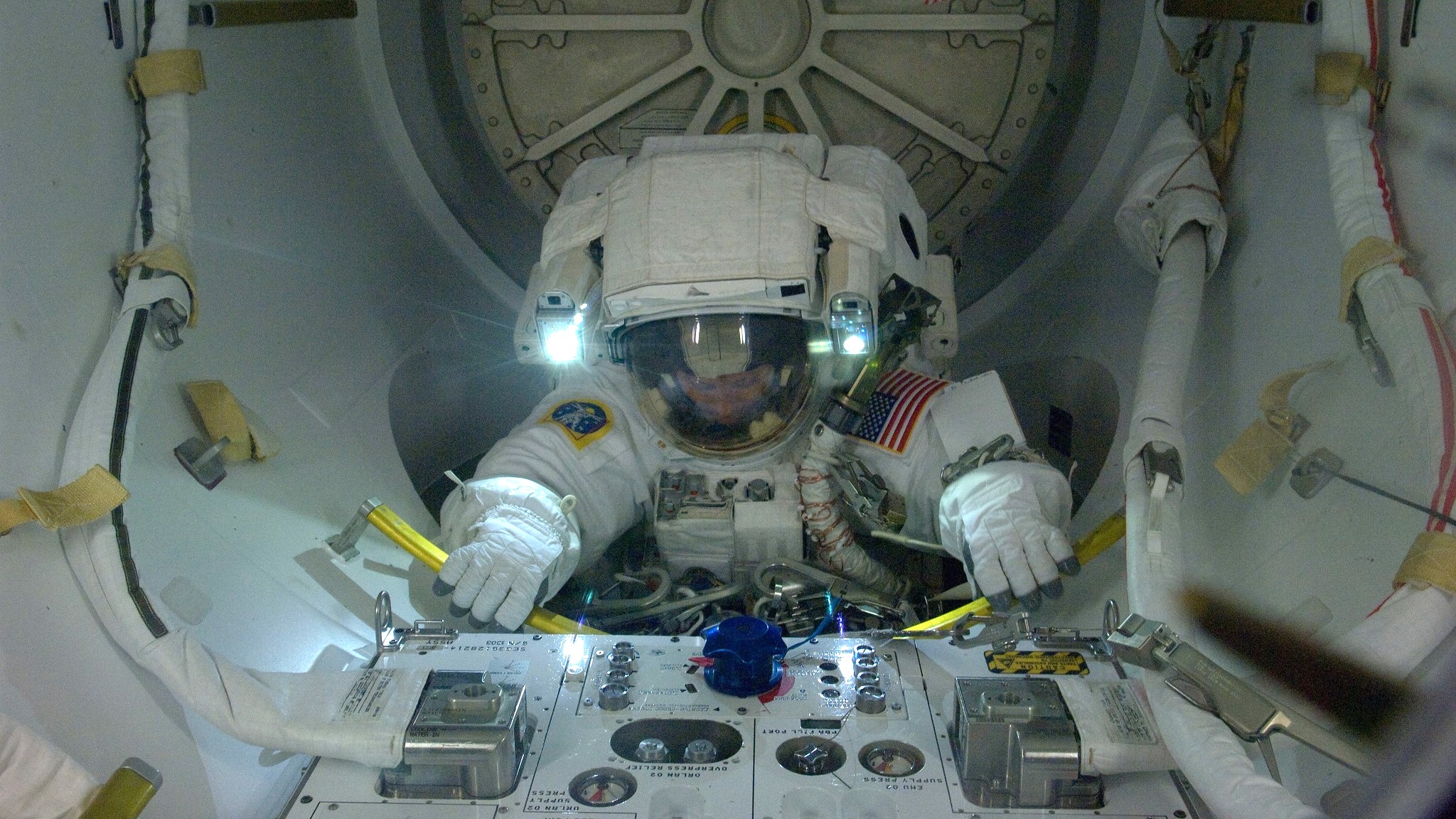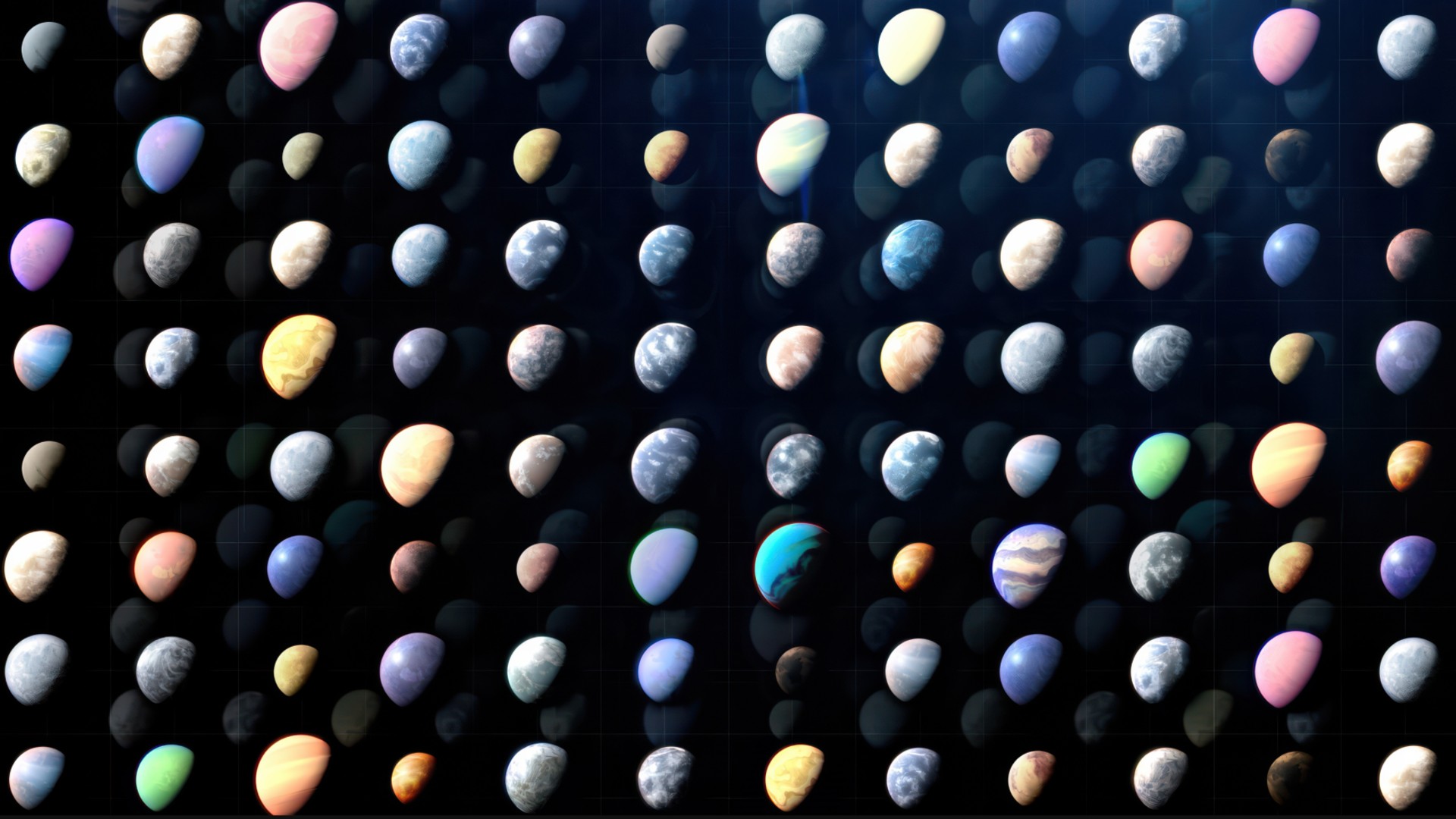NASA astronaut Tracy C. Dyson 'super-pumped' for 3rd space mission (exclusive video)
She'll launch toward the ISS aboard a Russian Soyuz spacecraft as soon as March 21.
A NASA astronaut says she can't wait to welcome a new spacecraft to her home in space during her next mission, which is scheduled to lift off this month.
NASA astronaut Tracy C. Dyson will launch toward the International Space Station (ISS) from Kazakhstan aboard the Russian Soyuz MS-25 spacecraft no earlier than March 21, alongside Roscosmos cosmonaut Oleg Novitskiy and spaceflight participant Marina Vasilevskaya of Belarus. Dyson should return home this fall alongside one-year ISS astronauts Oleg Kononenko and Nikolai Chub, while Novitskiy and Vasilevskaya have a 12-day stay in space.
If all goes according to plan, Dyson and her Expedition 70/71 crewmates will be the first to open the hatch to a crewed Boeing Starliner spaceship in April, bringing in NASA astronauts Butch Wilmore and Suni Williams. That coming event has special meaning for Dyson, given that she was lead and development of the capcom (capsule communicator) group for Starliner's mission operations.
"It's super exciting. I don't want to jinx it by talking about it, but I am super excited," Dyson joked to Space.com on Feb. 26, referring to Starliner's numerous technical delays in the past few years. For years, she thought she would be helping guide Starliner's first approach to the ISS from the ground, but, as things turned out, she'll instead get an insider's look.
"I just had no clue that I would get this opportunity to be at the front door when they arrived," Dyson said. "I'm super pumped, and I can't wait to see my two friends in that capsule."
Related: Boeing's Starliner capsule still on track for mid-April astronaut launch to ISS
Dyson, who previously flew on the space shuttle mission STS-118 in 2007 and Expedition 23/24 on the ISS in 2010, was hired by NASA as an astronaut candidate in June 1998. The agency prizes astronauts who practice technical skills in tough situations on Earth. But even among astronauts, Dyson's case was special: She was helping her electrician father from the time she was seven years old.
Breaking space news, the latest updates on rocket launches, skywatching events and more!
"I had just way too much energy to be on the job site without doing something useful," she joked. From simple tools, she leveled up the work complexity all the way through her graduate school studies while "watching my father solve problems" on the job, just like astronauts need to do in space.
"It really helped me overcome the fear that I had, that I just couldn't understand these things," said Dyson. At school, lessening the fear allowed her to dive into the complexities of chemistry, especially on the hardware side: "lasers that broke down, and pumps that broke down, and all those types of things."
Her first long-duration ISS mission put that creed of self-sufficiency into unexpected practice: an ammonia coolant system on the orbiting lab broke down, and Dyson was sent out in a spacesuit three times to do emergency repairs. "You know, pumps fail and you've got to go do a spacewalk to fix it," she said. "You don't have a hardware store just around the corner, and you have to make do with what you have."
Related: Astronauts say tricky space station repair a success
Aside from the spacewalking, Dyson is also famous in space circles for a now iconic photo she took from the ISS in 2010, making use of a cupola wraparound window that had only been installed a few months before her crew arrived that April.
"It was right after our series of EVAs," Dyson said of the picture, referring to the three spacewalks, or extravehicular activities. Her assigned psychologist, which all astronauts have access to, asked Dyson what she would miss most about space. When Dyson mentioned the cupola, the psychologist told her to take a picture.
While the mere mortals among us would snap a quick selfie, Dyson took to the task with typical astronaut flair. She spent the next three weeks of her spare time planning out the incredible photo. She played with the position of the camera, the timing of the shutter, the mechanics of the remote control, and the moments she would get "the most perfect lighting."
"What I was going for was an image that reminded me whenever I looked at it of what it felt like look out the window," she said. Incidentally, the version circulating on the internet is overexposed, as Dyson's original shows her in silhouette to emphasize the lighting from Earth. She also didn't mean for it to go that wide: After she sent the photo to an instructor on the ground, her crewmate Doug Wheelock asked permission to tweet it. "That's how I got out onto the internet," she said.
In 2010, Dyson made an American Sign Language (ASL) address from space, becoming part of a small group of astronauts to do so; for example, NASA astronaut William Readdy first beamed down footage in 1992 of him using ASL on the space shuttle mission STS-42.
The ASL video built on a capability Dyson started to learn in high school to assist a track team member who was deaf. She pursued ASL more formally in graduate school, becoming so competent that she was asked to use some of her office hours to help an undergraduate student who was deaf.
"It really helped me appreciate all that they do just to maneuver in a hearing world," Dyson said of these experiences. "So then, when I went to the space station, I wanted to very much reach out to their community in a way that made the space station accessible to them, in their language." She hinted that she may provide more ASL materials in space, if time and energy permit.
Related: Astronomy for the hearing-impaired: New list shows signs for 47 terms
Dyson said she does not have any special personal projects in mind for the upcoming mission. "That's in part because I remember how busy it was the last time; I was really stressed when there were things that I wanted to do," she said in a brief call on Jan. 25. But she is excited about some professional activities coming up in space, she added in the Feb. 26 interview.
One is using a new "timeline viewer" that keeps astronauts on task in orbit, sometimes in increments as small as five minutes each. The newer version, compared to what Dyson used in 2010, is "easier to interact with" and makes it easier for astronauts to pick up or drop flexible activities through the day.
Aside from the timeline, Dyson will also use a newer inventory program that keeps track of stowage on board the ISS. "It's kind of nerdy stuff, but I can't wait to experience the efficiencies," Dyson said. Before, every time a cargo ship arrived at the station, the astronauts had to use pencil and paper to keep track of where things went. Now that's all done by app, making it easy to manage an ever-more-crowded ISS.
Then there are the hundreds of experiments Dyson will help conduct, filling up most of her time in space: working with fire in a container, experimenting with materials in a electrostatic levitation furnace, checking for microorganisms in space station vents with the ISS External Microorganisms experiment, and the usual samples for "bodily fluids, my brainwaves and my heart rate," she said.
Looking further into the future, Dyson said she's looking forward to a new generation of stretchier spacesuits that will be bound for testing on the ISS later in the decade — not to mention surface spacesuits for the Artemis moon missions that could see Artemis 3 land astronauts at the lunar south pole as soon as 2026.
"Let me tell you: I respect our spacesuits," said Dyson of the current extravehicular mobility unit (EMU) in use on the ISS after decades of service dating from shuttle. "But it's one of the hardest things to do, to maneuver in it. And that's [because of] all the bearings and and the pressurization in the suits."
Having suits "to actually walk in," she added, will be an exciting development for forthcoming missions. "I'm really looking forward to the extra mobility, hopefully, that these spacesuits will provide — and the visibility."

Elizabeth Howell (she/her), Ph.D., was a staff writer in the spaceflight channel between 2022 and 2024 specializing in Canadian space news. She was contributing writer for Space.com for 10 years from 2012 to 2024. Elizabeth's reporting includes multiple exclusives with the White House, leading world coverage about a lost-and-found space tomato on the International Space Station, witnessing five human spaceflight launches on two continents, flying parabolic, working inside a spacesuit, and participating in a simulated Mars mission. Her latest book, "Why Am I Taller?" (ECW Press, 2022) is co-written with astronaut Dave Williams.



